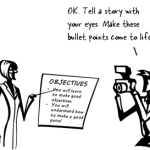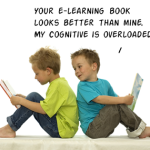Thank you for the article, thought-provoking on so many levels.
It’s a tough one, because it does seem that the problem lies, for some, maybe many companies, that compliance is a chore to be ticked off, rote rather than a learning vehicle devised to make people think.
I love the idea of teaching people, via the course presentation, how to research information rather than just feeding them. According to many a frustrated teacher, professor, company executive I know, too many people have no idea how to do the most basic of research be it internet or library, past a consumer driven approach. And multiple choice questions are a cop-out for most tests, not a valid measure of knowledge or understanding, and certainly not thought-provoking — but is that the current compliance test objective?
A quick decision-making scenario is a great idea, engaging and even fun, a real test of critical thinking and knowledge, with the added benefit that it (and research know-how) would transfer as value to other areas of people’s work, education and lives.
The question is, do companies want to take that step? In my experience they need heavy-duty convincing, despite it being far more valuable in the long-run to their needs and the learner. They would need to see it as a long-term investment rather than a check-box.
Most of all I like your ideas because they respect the learner.
Too few compliance trainings take the learner’s needs into account, probably why people find them so boring and forgettable too!
















0
comments